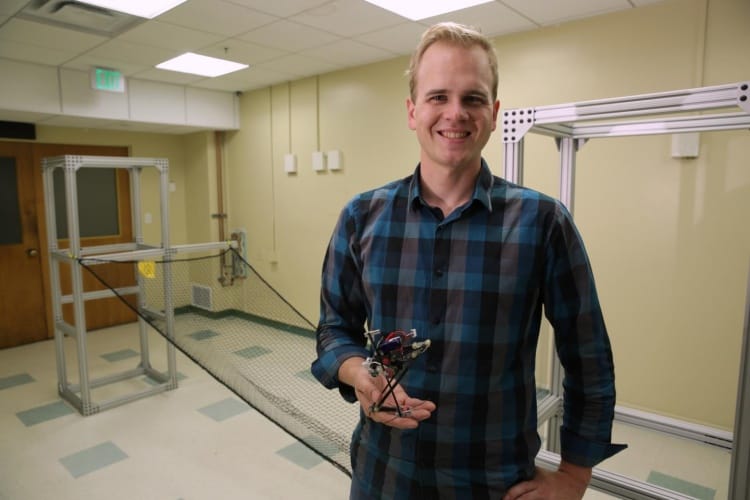Known as Salto (saltatorial locomotion on terrain obstacles), the robot weighs 100g and is 26cm tall when fully extended. To jump, Salto crouches in a similar way to galagos (also known as bush babies), who store energy in their tendons to help them jump. The robot uses a motor to drive a spring, which loads via a leg mechanism to create the kind of crouch seen in the galago.
Employing this power modulation also means that once Salto lands it is immediately ready to jump again, without needing to wind up. This allows it to jump onto walls and then spring off them in much the same way as freerunners do in urban environments.
To evaluate Salto’s capabilities, the researchers developed a new metric to quantify vertical agility. They defined this as the height something can reach in a single jump, multiplied by the frequency with which the jump can be made. Salto’s ability was measured at 1.75 metres per second, short of a galago’s 2.24, but ahead of a bullfrog at 1.71. The robot with the next best ability that the team measured scored just 1.1m/s.

“Developing a metric to easily measure vertical agility was key to Salto's design because it allowed us to rank animals by their jumping agility and then identify a species for inspiration," said Duncan Haldane, a robotics PhD candidate at UC Berkeley, who led the work.
The research is published in Science Robotics, a new journal in which Salto features on the debut cover. According to the Berkeley team, the robot could have applications in search and rescue, using its abilities to hop through rubble and locate survivors.





Red Bull makes hydrogen fuel cell play with AVL
Surely EVs are the best solution for motor sports and for weight / performance dispense with the battery altogether by introducing paired conductors...